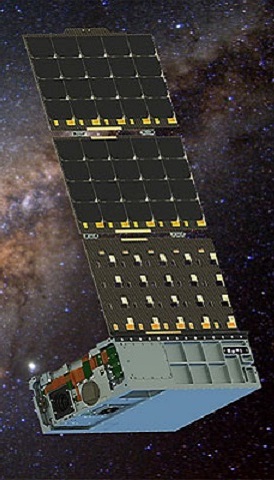HaloSat
HaloSat is a CubeSat for studying the distribution of hot gas in the Milky Way and understanding the distribution of mass in the Galactic halo. It was launched on May 21, 2018 from Wallops Space Flight Facility as part of a Cygnus ISS resupply mission. It was subsequently deployed from the ISS on July 13, 2018 from the Japanese Experimental Module. Operations began in October 2018 and the satellite re-enetered the Earth’s atmosphere on January 4, 2021. Mission Characteristics
Page authors: Lorella Angelini Jesse Allen HEASARC Home | Observatories | Archive | Calibration | Software | Tools | Students/Teachers/Public Last modified: Friday, 05-Apr-2024 16:55:48 EDT |


